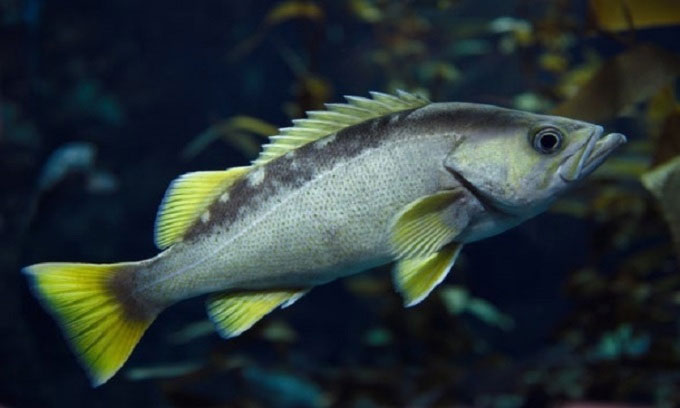A new study from the University of California, Berkeley, reveals that rockfish can live for hundreds of years due to possessing numerous genes that enhance longevity.
Some animals have significantly longer lifespans than others. While the dwarf goby lasts less than 10 weeks, the Greenland shark can live for over 500 years. To investigate the genetic mechanisms of aging, a group of biologists at the University of California (UC), Berkeley chose rockfish. Found in coastal waters from California, USA, to Japan, rockfish are a vibrant family that includes over 120 species in the genus Sebastes. Some species live only 10 years, while others, like the rougheye rockfish, can exceed 200 years.

Yellowtail rockfish living in the coastal waters of North America. (Photo: Alamy)
The diverse lifespans of rockfish provide an ideal parameter for analyzing the underlying genetic mechanisms, according to biologist Peter Sudmant at UC Berkeley. In a study published on November 11 in the journal Science, Sudmant and colleagues examined the genomes of 88 rockfish species and identified 137 genes that help enhance longevity.
Size and habitat are factors that contribute to the lifespan of fish. Scientists discovered that larger animals tend to have advantages that extend their lifespans due to slower metabolism and reduced predation threats. Similarly, colder environments can slow metabolism in animals. For instance, cold water allows the Greenland shark to live for centuries.
By comparing the genomes of short-lived and long-lived rockfish, the research team could identify genes that contribute to longevity. For example, long-lived rockfish possess numerous genes responsible for repairing damaged DNA. Sudmant and his colleagues also found that long-lived species have genes that regulate insulin. Another group of genes called butyrophilin controls the immune system of rockfish. According to Sudmant, similar genes play a role in suppressing inflammation in aging humans.
Longevity is crucial for certain rockfish species, according to Sabrina Beyer, an ecologist specializing in fish at the University of California, Santa Cruz. They can take decades to reach reproductive age, and very few of their larvae survive to adulthood. To compensate for these disadvantages, female rockfish need to produce a massive number of high-quality larvae each year. This is why rockfish need to grow large, live long, and spawn many high-quality larvae.


















































